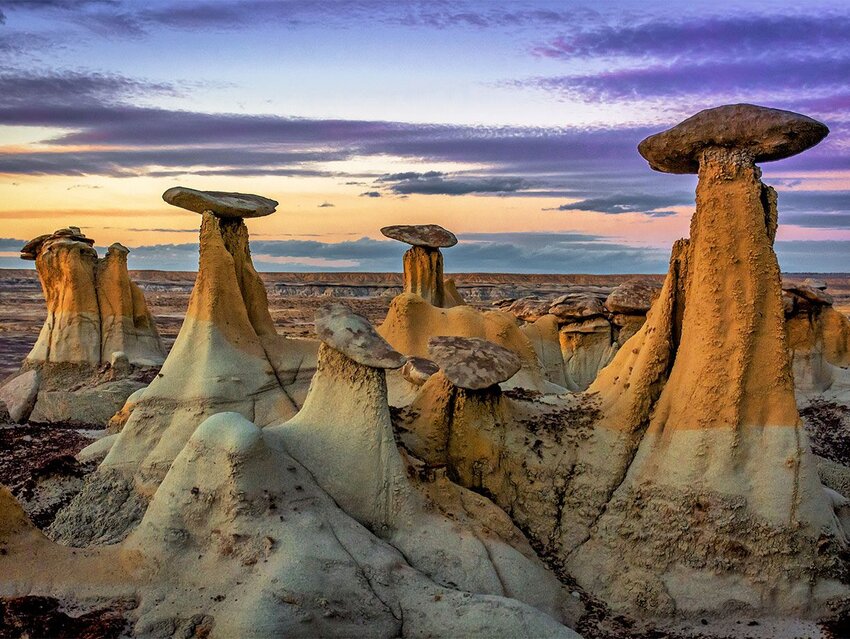Before European explorers came to the Americas, the land was occupied and cared for by Indigenous peoples whose diverse cultures spread far across the continents. In just the territory that would become the United States, there were an estimated 250 different Native languages — North America had more linguistic diversity than Europe did in 1492.
These North American languages are typically broken into nine major families, based on their locations and similarities: Algic (Algonquian), Athabaskan, Eskimo-Aleut, Iroquoian, Mayan, Muskogean, Salishan, Siouan, and Uto-Aztecan. Unfortunately, as the Indigenous populations declined, so did their languages. Navajo (of the Athabaskan family), the most widely used of these languages, has less than 200,000 speakers today.
Many of the hundreds of Indigenous languages have been lost over time, but linguists and Indigenous groups are working together to keep their languages alive in schools, on reservations, in the government, and at home.
Algic
The Algic or Algonquian-speaking peoples encompassed the largest area of North America. Their range spanned from western Canada to Maine, and south into the Midwest and Southeast. The Blackfoot tribe spoke a dialect of Algic called Siksikáí’powahsin (simply called the Blackfoot language today). Other tribes that spoke dialects of Algic include the Illinois, Shawnee, Powhatan, Massachest, Micmac, and Cree. Cree is the most widely spoken Algic language, with an estimated 60,000 speakers in Montana and Canada.
Learn Algic words:
Athabaskan
The Athabaskan language family spans the American Southwest, mainly in New Mexico and Arizona. Languages in this family include Apache and Navajo, the latter of which is the most widely spoken Indigenous language in the U.S. today, with an estimated speaking population of 170,000. The Navajo language is still being expanded with many new words (especially in technology), and it's the most translated Indigenous American language in the entertainment industry. For example, in 1996, the Super Bowl was broadcast in Navajo, and in 2013, Star Wars Episode IV: A New Hope was translated into the language.
Learn Athabaskan words:
Eskimo-Aleut
The Eskimo-Aleut languages are spoken in Alaska and northern Canada. They include Yupik, the second-most-spoken Indigenous language in North America and the most widely spoken Native language in Alaska. In 17 of the 68 Yupik villages in Alaska, children grow up speaking Yupik as their first language. The two most widely used forms of Yupik are Central Alaskan Yupik and Siberian Yupik.
Learn Eskimo-Aleut words:
Iroquoian
The Iroquoian languages extend throughout the eastern Great Lakes, Mid-Atlantic, and South, from Canada to Tennessee. The most widely spoken Iroquoian language is Cherokee, also known as Tsalagi (from the southern Appalachians). In 1821, Sequoyah invented a syllabary (a writing system in which symbols represent syllables) for Cherokee, revolutionizing the language and allowing it to be taught more easily in schools and homes. Of the 16 Iroquoian languages, seven still have native speakers. Aside from Tsalagi, they include Mohawk (also known as Kanien'keha), Oneida, Onondaga, Cayuga, and Seneca (all originally spoken in New York), and Tuscarora (originally spoken in North Carolina).
Learn Iroquoian words:
- Tsalagi/Cherokee: “Dog” is Gihli
- Kanien'keha/Mohawk: “See” is Ratkáhthos
- Seneca: “White” is Kakë:'ët
Muskogean
The Muskogean languages stretch across the southeastern U.S. (from Mississippi to Florida) and consist of fewer than 10 languages, only a handful of which are still spoken today. The most popular is Choctaw, which has around 9,000 native speakers in Oklahoma and Mississippi. Before European settlers arrived, the most popular languages were Koasati and Alabama (spoken in northern Alabama), Creek and Chickasaw (spoken in Mississippi and Tennessee), and Mikasuki (spoken in Alabama and Georgia). A dialect of Creek is also spoken by the Seminoles of southern Florida.
Learn Muskogean words:
Salishan
The Salishan languages of the Pacific Northwest are known for their large number of consonants and few vowels. They were spoken by the Shuswap, Salish, and Kalispel tribes, although there are few native speakers today of the 23 languages in this group.
Learn Salishan words:
- Coeur d'Alene: “Water” is Sikwe'
- Nooksack: “One” is Nutso
- Salish: “Moon” is Saka'am
Siouan
The Siouan language family is spoken by the Sioux Nation, with many dialects spoken throughout the Great Plains and surrounding areas. There were once an estimated 17 major dialects of Siouan languages, most of which are extinct now. Today, the Dakota, Lakota, Stoney, and Crow tribes are the only groups with a significant number of native speakers.
Learn Siouan words:
- Dakota Sioux: “Three” is Yamni
- Biloxi: “Sun” is Ina'
- Lakota Sioux: “Man” is Wica
Uto-Aztecan
These languages are some of the oldest and most widespread Indigenous languages on the continent. They cover large swaths of California, Oregon, Idaho, Wyoming, Nevada, Utah, Colorado, and Arizona, and are also found in parts of Texas (the Comanche tribe) and Mexico (the Pima tribe). The Uto-Aztecan languages are typically divided into seven branches. The northern branches include Numic, Takic, Hopi, and Tübatulabal, and the southern branches include Piman, Taracahitic, and Corachol-Aztecan.
Learn Uto-Aztecan words:
Featured image credit: harryhayashi/ iStock

